Research
Too specifically related to Chemistry and Part of Physics (molecular)? If you don’t like it, please go to Projects and Blog pages.
List of research topics
- Interaction of atmospherically-relevant small molecules
- Growth of ultra-fine particles by organic vapors of atmospheric intrests
- Hygroscopicity and cloud condensation activity of lab genrated nano particles
- Semi-volatile organic compounds detection in particle/vapor phase
Interaction of atmospherically-relevant small molecules
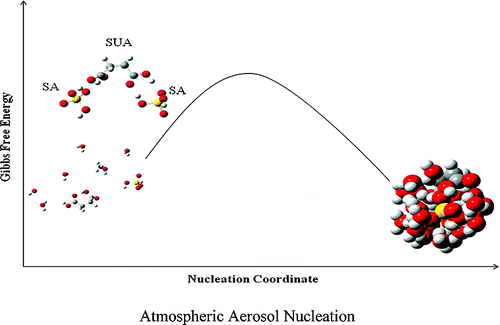

Dicarboxylic acids are important products from photooxidation of volatile organic compounds and are believed to play an important role in the formation and growth of atmospheric secondary organic aerosols. The interaction of five dicarboxylic acids, i.e., oxalic acid (C2H2O4), malonic acid (C3H4O4), maleic acid (C4H4O4), phthalic acid (C8H6O4), and succinic acid (C4H6O4), with sulfuric acid and ammonia has been studied, employing quantum chemical calculations, quantum theory of atoms in molecules (QTAIM), and the natural bond orbital (NBO) analysis methods. Several levels of quantum chemical calculations are considered, including coupled-cluster theory with single and double excitations with perturbative corrections for the triple excitations (CCSD(T)) and two density functionals, B3LYP and PW91PW91. The free energies of formation of the heterodimer and heterotrimer clusters suggest that dicarboxylic acids can contribute to the aerosol nucleation process by binding to sulfuric acid and ammonia. In particular, the formation energies and structures of the heterotrimer clusters show that dicarboxylic acids enhance nucleation in two directions, in contrast to monocarboxylic acids.
Due to the enormous conformational space as the size of molecular clusters increase, Basin Paving Monte Carlo (BPMC) was used with classical force field to search low energy conformers. Geometry optimization and frequency calculations are further performed on the basis of the BPMC results using density functional theory.
Growth of ultra-fine particles by organic vapors of atmospheric interests
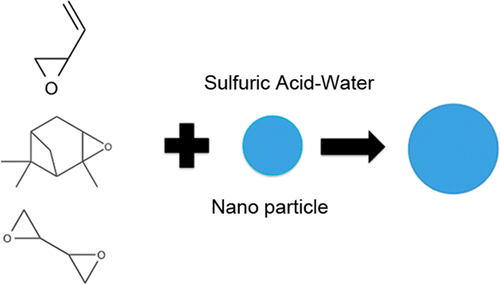
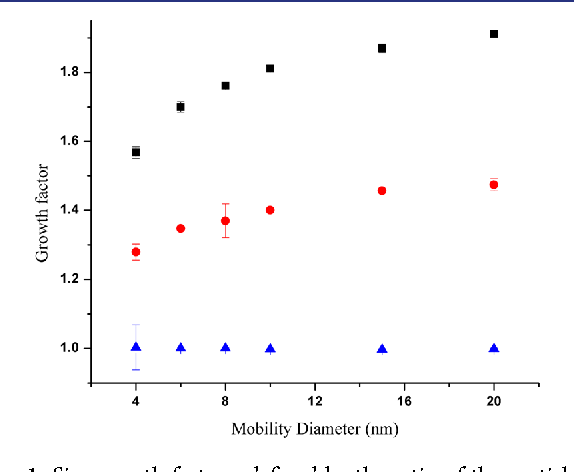
Although new particle formation accounts for about 50% of the global aerosol production in the troposphere, the chemical species and mechanism responsible for the growth of freshly nucleated nanoparticles remain largely uncertain. Here we show large size growth when sulfuric acid nanoparticles of 4-20 nm are exposed to epoxide vapors, dependent on the particle size and relative humidity. Composition analysis of the nanoparticles after epoxide exposure reveals the presence of high molecular weight organosulfates and polymers, indicating the occurrence of acid-catalyzed reactions of epoxides. Our results suggest that epoxides play an important role in the growth of atmospheric newly nucleated nanoparticles, considering their large formation yields from photochemical oxidation of biogenic volatile organic compounds
Hygroscopicity and cloud condensation activity of lab generated nano particles
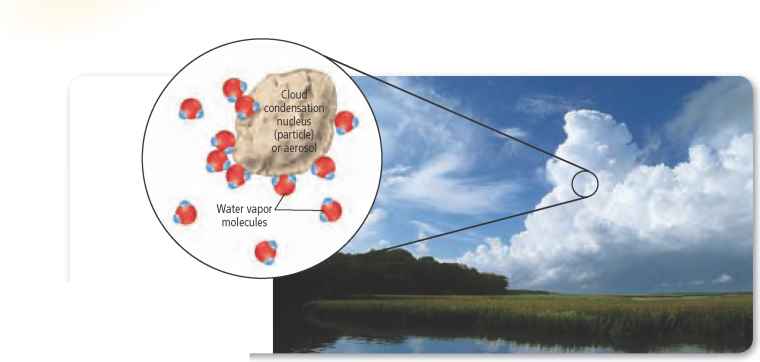
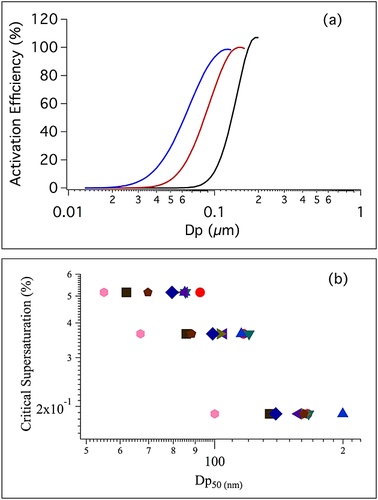
The hygroscopic growth factor (HGF) and cloud condensation nuclei (CCN) activity are measured for surrogates that mimic atmospherically relevant oligomers, including glyoxal trimer dihydrate, methyl glyoxal trimer dihydrate, sucrose, methyl glyoxal mixtures with sulfuric acid and glycolic acid, and 2,4‐hexandienal mixtures with sulfuric acid and glycolic acid. For the single‐component aerosols, the measured HGF ranges from 1.3 to 1.4 at a relative humidity of 90%, and the hygroscopicity parameter (κ) is in the range of 0.06 to 0.19 on the basis of the measured CCN activity and 0.13 to 0.22 on the basis of the measured HGF, compared to the calculated values of 0.08 to 0.16. Large differences exist in the κ values derived using the measured HGF and CCN data for the multi‐component aerosols. Our results reveal that, in contrast to the oxidation process, oligomerization decreases particle hygroscopicity and CCN activity and provides guidance for analyzing the organic species in ambient aerosols.
Semi-volatile organic compounds detection in particle/vapor phase
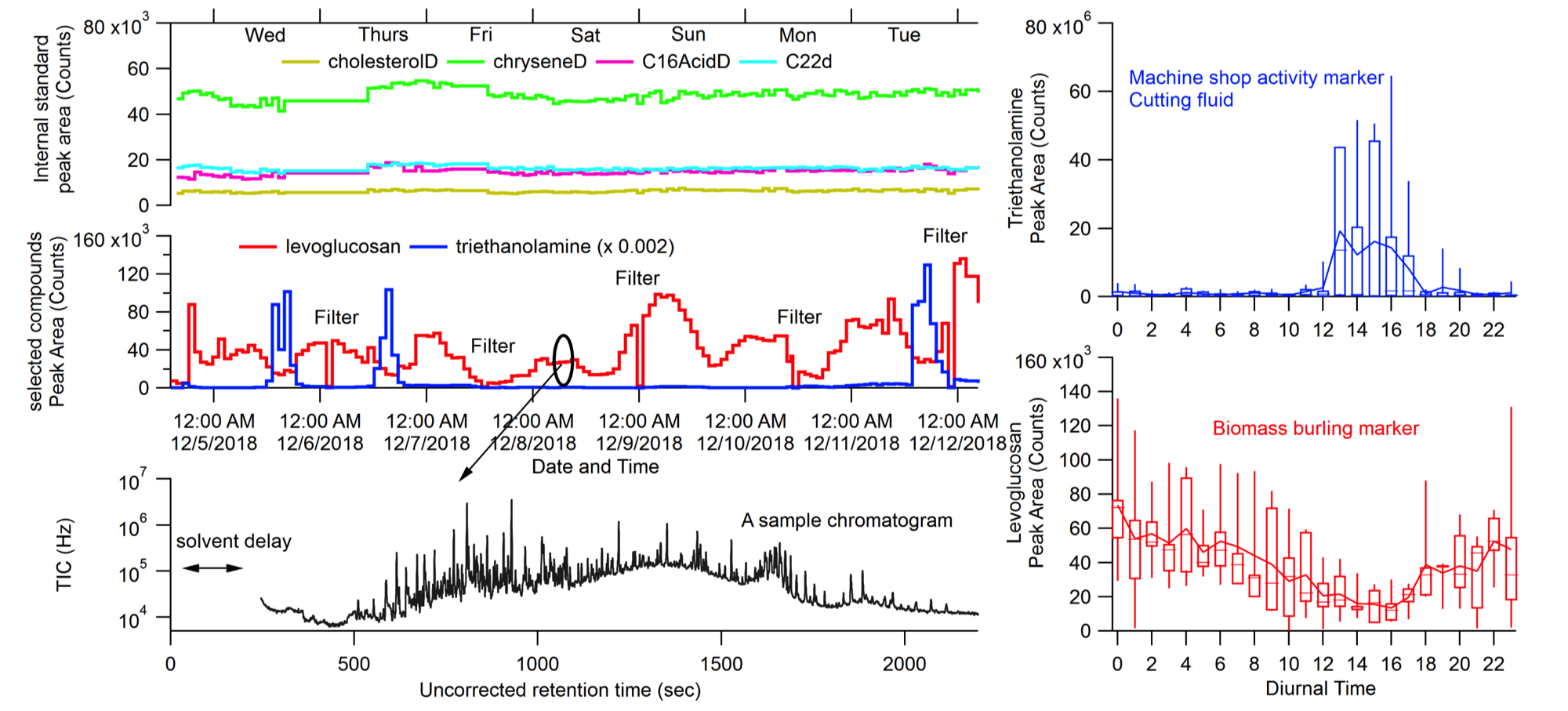

Time series of internal standard and selected marker compounds showing elevated biomass burning and machine shop activity during nighttime and daytime, respectively. The increased nighttime biomass burning might corresponds to people burning woods for heating in New England area. The machine shop activty shows weekday and weekends difference, indicating that no one is working during the weekends.
The right panel of the graph exposes the core structure of Thermal Desorption Aerosol Gas Chromatograph. The principle of operation of this unit could be found in the brochure or contact Aerodyne to obtain.